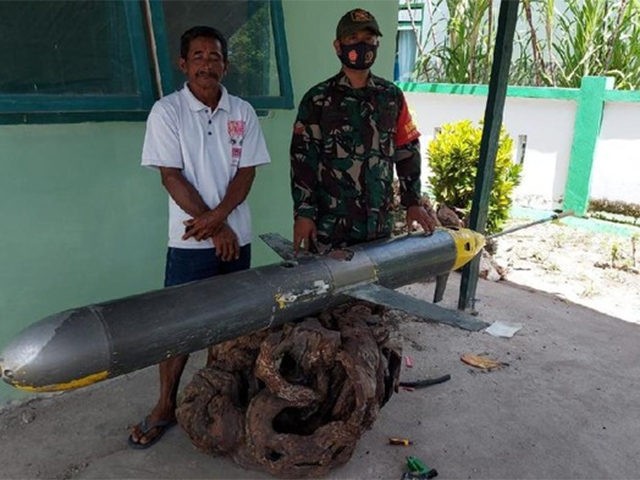An underwater drone recovered within Indonesian waters last month is of Chinese origin, defense analytics firm Janes confirmed Sunday.
“The ‘missile-like’ object with wings has been identified as the Chinese-built autonomous underwater glider Haiyi or ‘sea wing,'” Janes’ principal unmanned systems analyst, Kelven Wong, told CNBC on January 10.
A local Indonesian fisherman found the glider off Selayar Island in Indonesia’s South Sulawesi province on December 20 before handing it over to local police. Authorities later submitted the drone to the Indonesian Navy.
“The unmanned underwater vehicle (UUV), labeled ‘Shenyang Institute of Automation Chinese Academy of Sciences,’ was later transferred to the 6th Main Naval Base in Makassar where it is being inspected,” the South China Morning Post (SCMP) reported January 9.
China last deployed underwater Haiyi gliders in December 2019 as part of a 12-14 drone fleet directed by the specialist survey ship Xiangyanghong 06. The fleet formed part of a winter survey mission in the Indian Ocean organized by China’s Joint Ocean and Ecology Research Project, run by China’s Ministry of Natural Resources.
The Chinese UUVs “measured seawater temperature, salinity, turbidity, chlorophyll, and oxygen levels. This information was transmitted back to the mother ship via the aerial in the tail,” Forbes defense analyst H. I. Sutton reported in March.
“This is the sort of information which sounds innocuous but is commonly gathered for naval intelligence purposes,” the analyst noted.
“In particular it is relevant to submarine warfare. For example salinity levels can affect the distance that a submarine can be heard from. And it may be possible to detect submarines if they disturb chlorophyll,” he added.
Within the past two years, Indonesia has discovered two other UUVs identical to the glider found near Selayar Island on December 20.
“In January, one was recovered near the Masalembu Islands, some 400 miles west of the Selayar Islands. In March 2019, yet another one was found in the waters around the Riau Islands even further to the northwest,” the Drive noted on December 29.
All three gliders were found off islands situated near strategic sections of maritime routes that link the South China Sea to the Indian Ocean.
“By deploying these gliders in these locations … China can ensure their submarines are best able to deploy from the South China Sea into the Indian Ocean, or against Australia’s north and western maritime approaches in a future conflict,” Malcolm Davis, a senior defense strategy analyst at the Australian Strategic Policy Institute, told the SCMP on January 9.

COMMENTS
Please let us know if you're having issues with commenting.